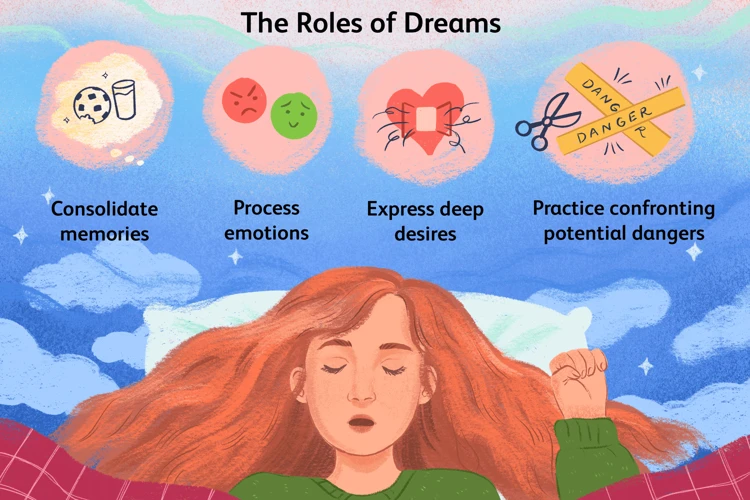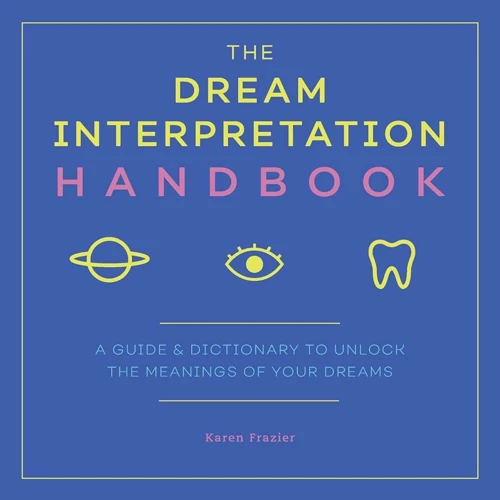Have you ever had a dream so vivid and compelling that it stayed with you long after you woke up? Dreams have always fascinated humans, and many believe they hold significant meaning and insight into our lives. If you’re interested in exploring the depths of your dreams and uncovering their hidden messages, understanding and utilizing dream signs is essential. Dream signs are symbolic elements that occur in your dreams and can provide valuable clues about their interpretation. In this article, we’ll delve into the world of dream signs, explore how they can enhance dream recall and interpretation, and discuss various techniques to amplify their presence. Get ready to embark on a journey into the realm of dreams and unlock the mysteries they hold.
Understanding Dream Signs

Dream signs are an essential concept for understanding the intricate world of dreams. What exactly are dream signs? Dream signs are symbolic elements that occur within your dreams and can serve as important indicators for the interpretation of your dream experiences. These signs can manifest in various forms, such as recurring themes, objects, people, or situations. By recognizing and analyzing these dream signs, you can gain deeper insights into your subconscious mind and unravel the hidden meanings behind your dreams. It’s important to note the significance of dream signs in our journey towards self-discovery and personal growth. Dream signs act as guideposts, helping us navigate through the dream landscape and connect our dream experiences to our waking lives. They offer valuable clues that can lead to a better understanding of our thoughts, emotions, and desires. To fully comprehend and utilize the power of dream signs, it’s crucial to enhance our dream recall abilities.
What are Dream Signs?
- Distinct Elements within Dreams: Dream signs are specific elements or occurrences that stand out within the context of a dream. They can include objects, situations, themes, or even emotions that appear repeatedly or have a significant impact on the dreamer’s experience.
- Symbolic Indicators: Dream signs are not merely random occurrences but can hold symbolic meaning. They may represent unconscious desires, fears, unresolved issues, or important aspects of one’s life. The interpretation of dream signs can provide valuable insight into the dreamer’s psyche.
- Recurring Patterns: Dream signs often manifest as recurring patterns within a person’s dreams. These patterns may evolve over time, repeating in different forms or contexts, but their underlying significance remains consistent. Recognizing these patterns can help identify specific dream signs.
- Personal and Universal Dream Signs: Dream signs can be both personal and universal. Personal dream signs are unique to each individual and may be influenced by their experiences, memories, and personal symbolism. Universal dream signs, on the other hand, are commonly shared symbols that hold similar meanings across cultures and can be found in many people’s dreams.
- Important Clues for Interpretation: Dream signs serve as important clues for interpreting dreams. Analyzing these signs and their associated emotions, contexts, and relationships within the dream can reveal deeper meanings and messages. They can provide insights into unresolved issues, desires, subconscious beliefs, or personal growth opportunities.
Understanding what dream signs are is the first step in harnessing their power to enhance dream recall and interpretation. By recognizing and exploring the unique elements within your dreams, you can unlock the rich symbolism and messages hidden within the realm of dreams. To further explore the role of dream signs in lucid dreams, check out our article on the role of dream signs in lucid dreams.
The Importance of Dream Signs
The importance of dream signs cannot be overstated when it comes to understanding and harnessing the power of our dreams. Here are a few reasons why dream signs play a vital role in dream interpretation:
1. Revealing Symbolism: Dream signs act as symbols or metaphors within our dreams, representing deeper meanings and messages from our subconscious mind. By recognizing and deciphering these symbols, we can gain insights into our emotions, fears, desires, and unresolved issues. Dream signs serve as a bridge between our conscious and unconscious selves, allowing us to explore layers of meaning that may be hidden in our dreams.
2. Providing Context: Dream signs offer contextual clues that help us understand the narrative and themes of our dreams. By identifying recurring dream signs or patterns, we can uncover the underlying themes or concerns that our subconscious mind is trying to communicate to us. This contextual information helps us make connections between different dream experiences and provides a richer understanding of our dream world.
3. Personal Significance: While there are common dream signs that many people experience, each individual also has personal dream signs that hold unique significance. These personal dream signs may be specific to our own experiences, memories, or relationships. By paying attention to these personal dream signs, we can gain deeper insights into our individual journeys, emotions, and challenges.
4. Facilitating Dream Recall: Dream signs serve as anchors that help us remember our dreams more vividly. When we actively pay attention to and record our dream signs in a dream journal, it enhances our ability to recall dreams in greater detail. This, in turn, allows us to analyze and interpret our dreams more effectively, leading to a deeper exploration of our subconscious mind.
Understanding the importance of dream signs is crucial for anyone wishing to tap into the profound wisdom and guidance that our dreams offer. By actively engaging with our dream signs and exploring their meanings, we can embark on a transformative journey of self-discovery and personal growth. To further enhance your understanding of dream signs, consider keeping a dream journal and identifying the different types of dream signs that commonly occur. These practices will serve as valuable tools on your dream exploration path.
Enhancing Dream Recall

One of the key steps in enhancing dream recall is keeping a dream journal. By recording your dreams regularly, you create a habit of actively paying attention to your dream experiences and capturing them in written form. This process helps to strengthen the connection between your conscious and subconscious mind, making it easier to recall dreams in detail. Keep a journal next to your bed and write down any fragments, images, or emotions that you remember upon waking up. Over time, with consistent practice, your dream recall abilities will improve, allowing you to remember more vivid and detailed dreams. Additionally, practicing dream recall techniques can significantly enhance your ability to remember dreams. Techniques like setting the intention to remember your dreams before sleep, visualizing yourself waking up and recalling your dreams, and gently waking up without moving to hold onto dream memories can all contribute to improved dream recall. Regularly engaging in these practices will strengthen your dream recall muscles and help you unlock a treasure trove of dream experiences.
Keeping a Dream Journal
Keeping a dream journal is a powerful technique for enhancing dream recall and identifying dream signs. By documenting your dreams in a journal, you create a tangible record of your dream experiences, allowing you to review them later and identify recurring themes, symbols, and patterns. To start a dream journal, keep it within reach of your bed along with a pen or pencil. As soon as you wake up, before the memories of your dreams fade away, take a few moments to jot down any details you can remember. Be as descriptive as possible, noting the people, places, emotions, and events that occurred in your dreams. It’s also helpful to include the date and time of each dream entry. This practice helps establish a habit of actively engaging with your dreams and reinforces the importance of dream recall in your subconscious mind. Over time, you’ll notice that your dream recall improves, enabling you to remember more vivid and complex dream scenarios. Additionally, a dream journal serves as a valuable tool for identifying dream signs. As you review your journal entries, look for recurring elements, symbols, or themes that appear across different dreams. These patterns can indicate personal dream signs, providing insights into your subconscious mind and helping you better understand yourself. By connecting your dream experiences through a dream journal, you’ll be able to establish a stronger grasp on the symbology and significance of your dreams. Visit this article to further understand the importance of a dream journal in identifying dream signs and uncovering their meanings.
Practicing Dream Recall Techniques
Practicing dream recall techniques is crucial for improving your ability to remember and recall your dreams. Here are some effective techniques you can incorporate into your daily routine:
- Set the intention: Before going to bed, set a clear intention to remember your dreams. Repeat affirmations such as “I will remember my dreams” or “I am open to receiving dream messages.”
- Keep a dream journal: Keep a notebook and pen by your bedside. As soon as you wake up, without moving too much, try to recall any fragments or emotions from your dreams. Write down whatever you remember, even if it’s just a single word or image.
- Create a dream routine: Train your mind to associate waking up with remembering dreams. When you wake up, lie still for a few moments with your eyes closed, and try to retrieve any dream fragments. Slowly, shift your focus to the feelings and images that emerge from your dream memories.
- Record sensory details: Pay attention to the sensory details in your dreams, such as sounds, smells, textures, and tastes. By noting these details in your dream journal, you’re enhancing your ability to remember the full experience of your dreams.
- Wake up naturally: Setting alarms or abruptly waking up can sometimes disrupt dream recall. Try to wake up naturally or use gentle alarm sounds that don’t startle you. This allows for a smoother transition from the dream state to waking consciousness.
By consistently practicing these techniques, you’ll strengthen your dream recall abilities and increase your chances of remembering more vivid and meaningful dreams. Over time, you’ll become more attuned to the different types of dream signs that appear in your dreams, enabling you to interpret and utilize them more effectively.
Identifying Dream Signs

Identifying dream signs is a key step in harnessing the power of your dreams for interpretation and self-discovery. So, what are the common types of dream signs? These can vary from person to person, but they often include recurring themes, objects, people, or situations that frequently appear in your dreams. By paying close attention to these patterns, you can start to recognize your personal dream signs. These personal dream signs can be unique to you and may carry specific meaning or significance in your dream world. Identifying and understanding these signs require introspection and a keen observation of your dreams over time. By keeping a dream journal and noting down the recurring elements in your dreams, you can begin to uncover the hidden messages they hold. The process of identifying dream signs is a fascinating journey of self-discovery and can offer valuable insights into your subconscious mind.
Common Types of Dream Signs
Dream signs can take on various forms and themes, each holding their own significance within the realm of dreams. Here are some common types of dream signs to keep an eye out for:
1. Recurring Symbols: These are symbols or objects that frequently appear in your dreams. They can be highly personal or have universal meanings. For example, a recurring symbol like water may represent emotions or the need for purification and cleansing.
2. Emotions and Sensations: Dreams often evoke powerful emotions and sensations. Pay attention to how you feel during a dream as these emotions can reflect deeper psychological states. Whether it’s fear, joy, or confusion, these emotions serve as valuable dream signs for interpretation.
3. People and Characters: Dreams often feature familiar faces, strangers, or even fictional characters. These individuals can represent aspects of yourself or significant people in your life. Pay close attention to their role and how they interact with you or other dream elements.
4. Environmental Clues: Dreams often incorporate elements from your environment, whether it’s your home, workplace, or a specific location. The condition of these environments or any unusual changes can serve as dream signs, offering insights into your subconscious thoughts and concerns.
5. Actions and Situations: Dreams are filled with activities and situations that may seem ordinary or bizarre. Consider the actions you take or find yourself in within the dream. These actions and situations can provide clues about your desires, fears, or unresolved issues.
Remember, these are just a few examples of common dream signs. The key is to observe and recognize patterns that frequently occur in your dreams. By identifying these recurring dream signs, you can begin to unlock the hidden messages and meanings that your dreams hold. So keep a keen eye out for these dream sign categories during your dream journeys! (Source: Types of Dream Signs)
Personal Dream Signs
Personal dream signs are unique to each individual and can provide deep insights into your personal experiences, memories, and emotions. These signs are specific symbols, themes, or recurring elements that frequently appear in your dreams and have personal significance. They can vary widely from person to person and are often influenced by your interests, hobbies, relationships, and life events. Personal dream signs may include specific people you know, places you’ve been, objects that hold personal meaning, or even abstract concepts that resonate with you on a deeper level. By paying close attention to these personal dream signs, you can start to unravel their symbolic meanings and uncover hidden messages from your subconscious mind. Keeping a dream journal and recording your dreams regularly can help identify patterns and recurring themes that may emerge as personal dream signs. Reflecting on these symbols and their connections to your waking life can provide valuable insights into your emotions, desires, and unresolved issues. Exploring the intricate web of personal dream signs can ultimately lead to greater self-awareness, personal growth, and a deeper understanding of your own psyche.
Using Dream Signs for Interpretation

Once you have identified and observed the dream signs present in your dreams, the next step is to use them for interpretation. Dream signs hold rich symbolism that can provide valuable insights into your subconscious mind. Symbolism and Dream Signs: Dream signs often represent deeper meanings and symbolize aspects of your life, emotions, and experiences. To interpret dream signs effectively, it’s important to explore the potential symbolism behind them and consider how they relate to your waking life. This requires delving into your own personal associations with specific symbols and understanding their cultural, psychological, and archetypal significance. By deciphering the symbolism of dream signs, you can uncover hidden messages and gain a deeper understanding of yourself. Contextualizing Dream Signs: Dream signs do not exist in isolation; they are part of a larger dream narrative. Analyzing the context in which dream signs appear can provide valuable clues for interpretation. Consider the various elements, characters, and emotions present in your dream and how they relate to the dream signs. Pay attention to the sequence of events, the feelings evoked, and any recurring patterns or themes. By contextualizing dream signs within the broader dream story, you can gain a more holistic understanding of their meaning and significance.
Symbolism and Dream Signs
The relationship between symbolism and dream signs is a fundamental aspect of dream interpretation. Dream signs often carry symbolic meanings that reflect our subconscious thoughts and emotions. Symbolism is the use of symbols to represent abstract ideas or concepts. In the context of dreams, symbols can take various forms, such as objects, animals, or actions.
When interpreting dream signs, it’s important to consider the symbolic meaning they hold. For example, seeing a snake in a dream could symbolize transformation, rebirth, or hidden fears. Similarly, water in dreams often represents emotions, while flying can symbolize freedom or a desire for change.
To decipher the symbolism behind dream signs, it can be helpful to keep a dream dictionary or reference guide. These tools provide interpretations and explanations of common symbols found in dreams. However, it’s important to remember that dream symbolism is highly subjective and can vary based on an individual’s personal experiences and cultural background.
Another crucial aspect of interpreting dream signs is understanding the context in which they appear. The surrounding elements and events in the dream can provide additional insights into the meaning of the symbols. For example, if you dream of flying in a joyful and exhilarating way, it may indicate a sense of empowerment or accomplishment in your waking life. On the other hand, if the dream of flying is accompanied by feelings of fear or instability, it could represent a fear of losing control or taking risks.
By examining the symbolism within dream signs and considering their contextual significance, we can gain deeper insights into our dreams and their underlying messages. Understanding the symbolic language of dreams allows us to tap into our subconscious mind and gain valuable self-awareness.
Contextualizing Dream Signs
Contextualizing dream signs is an important step in interpreting the deeper meaning behind them. When it comes to dream analysis, understanding the context in which dream signs appear is crucial for unraveling their significance. Dream signs don’t exist in isolation; they are intricately woven into the fabric of the dream narrative. One way to contextualize dream signs is by analyzing the overall theme or storyline of the dream. By examining the setting, the characters, and the events leading up to the appearance of a particular dream sign, you can gain a better understanding of its symbolic representation. For example, if you encounter a recurring dream sign of a clock ticking loudly, consider the context in which it occurs. Is it associated with a feeling of urgency or a deadline in your waking life? This can indicate that the dream sign is representative of time pressure or the need for better time management. Additionally, pay attention to any emotions or feelings evoked by the dream sign and how they align with your waking experiences. Emotions provide valuable insights into the subconscious mind and can further enhance the interpretation of dream signs. Remember, context is key when deciphering the messages hidden within dream signs, so take the time to examine the bigger picture and make connections to your waking reality.
Techniques to Amplify Dream Signs

Once you have a solid grasp on identifying dream signs, the next step is to amplify their presence in your dreams. By enhancing the visibility and frequency of dream signs, you can obtain a deeper understanding of your dreams and unlock their hidden messages. Meditation is a powerful technique that can help in amplifying dream signs. By practicing mindfulness and focusing on your intention to recognize and remember your dreams, you create a fertile ground for dream signs to manifest more prominently. Another effective technique is using affirmations. Before drifting off to sleep, repeat affirmations such as “I will remember my dreams and notice the dream signs” or “I am lucid and aware in my dreams.” This helps program your subconscious mind to pay attention to dream signs and increases the chances of recognizing them during your dreams. Additionally, incorporating reality checks into your daily routine can enhance the visibility of dream signs. Perform simple reality checks throughout the day, such as trying to push your finger through your palm or asking yourself if you are dreaming. This habit will carry over into your dreams, allowing you to question your reality and notice the presence of dream signs. By combining these techniques, you can significantly amplify dream signs and embark on a profound journey of dream exploration and interpretation.
Meditation and Dream Signs
Meditation can be a powerful tool for enhancing the recognition and understanding of dream signs. By incorporating meditation into your daily routine, you can develop a state of mindfulness that extends into your dream state. Here are some techniques to incorporate meditation into your dream sign practice:
1. Mindfulness Meditation: Start by practicing mindfulness meditation during your waking hours. This involves focusing your attention on the present moment, observing your thoughts and sensations without judgment. Through regular mindfulness practice, you can cultivate awareness and sharpen your ability to observe and recognize dream signs while you are dreaming.
2. Pre-Sleep Meditation: Before going to bed, engage in a pre-sleep meditation session. Find a quiet and comfortable space where you can relax. Close your eyes, take deep breaths, and focus on calming your mind. As you enter a relaxed state, visualize yourself becoming aware of dream signs in your future dreams. Planting this intention in your mind before sleep can increase your chances of noticing and recalling dream signs during the night.
3. Dream Sign Visualization: During your meditation practice, visualize yourself encountering specific dream signs that are common for you or that you wish to explore further. Imagine recognizing these signs and engaging with them in a lucid and conscious manner. This exercise reinforces your intention to notice and utilize dream signs, making them more salient in your dreams.
Remember, consistency is key when incorporating meditation into your dream sign practice. Aim to meditate regularly, even if only for a few minutes each day. Over time, you will develop a heightened awareness of your dreams, making it easier to identify and interpret the dream signs within them.
Affirmations and Dream Signs
Affirmations can be a powerful tool in amplifying dream signs and enhancing dream recall. By incorporating affirmations into your daily routine, you can train your mind to recognize and remember dream signs more effectively. Here are some techniques and practices you can employ:
1. Affirmation Visualization: Before going to bed, close your eyes and visualize yourself recognizing and interpreting dream signs. Repeat affirmations like “I am aware of my dream signs” or “I remember my dreams with clarity.” Visualize yourself actively engaging with your dreams and jotting down the significant dream signs in your dream journal.
2. Affirmation Writing: Write down your affirmations related to dream signs and dream recall on a piece of paper or in your dream journal. Repeat these affirmations daily, incorporating them into your morning or evening routine. For example, write affirmations such as “I easily remember and interpret my dream signs” or “Dream signs reveal valuable insights to me.”
3. Affirmation Reinforcement: Throughout the day, remind yourself of your affirmations during moments of mindfulness. Whenever you come across a potential dream sign in your waking life, affirm to yourself that you will recognize and remember it in your dreams. This reinforcement will help condition your mind to be more alert to dream signs.
4. Affirmation Recording: Record your affirmations in your own voice and listen to them as you prepare to sleep. This audio reinforcement can help subconsciously embed the affirmations into your mind, promoting better dream recall and increased awareness of dream signs.
Remember, consistency and belief are key when using affirmations. Embrace the power of positive self-talk and affirmations to strengthen your connection with dream signs and elevate your dream recall abilities.
Reality Checks and Dream Signs
Reality checks and dream signs go hand in hand when it comes to lucid dreaming. Lucid dreaming is the state of being aware that you are dreaming while you are actually experiencing the dream. It offers an incredible opportunity to actively engage and manipulate the dream environment. One effective technique to induce lucid dreaming is to integrate reality checks into your daily routine. These reality checks are simple actions or observations that you perform throughout the day to determine whether you are in a dream or in the waking world. By incorporating reality checks into your waking life, you’re more likely to carry out these checks in your dreams as well. When you encounter a potential dream sign, perform a reality check to confirm whether you are dreaming or not. This combination of reality checks and dream signs can help trigger lucidity and enhance your dream recall and interpretation.
There are various reality checks you can try, and it’s important to find the ones that work best for you. One common reality check involves looking at your surroundings and asking yourself, “Am I dreaming?”. In dreams, the environment often appears distorted or unusual, so this question can prompt you to question the reality of the dream. Another reality check involves examining text or numbers. In dreams, they often change or become unreadable upon closer inspection. By regularly checking the text or numbers in your waking life, you are likely to develop the habit of analyzing them in your dreams as well. Additionally, physical reality checks such as pushing your finger against your palm or trying to push your hand through a solid object can be effective in discerning whether you are in a dream or not.
The key to utilizing reality checks and dream signs is consistency. Make a habit of performing reality checks multiple times throughout the day, and especially when you come across potential dream signs. By continuously questioning the nature of your reality, you will train your brain to do the same during your dreams. Gradually, this practice will carry over into your dream state, allowing you to recognize dream signs more easily and achieve lucidity.
By combining reality checks with the identification and analysis of dream signs, you have a powerful tool for enhancing dream recall and interpretation. This technique not only increases self-awareness within dreams but also contributes to a deeper understanding of your own subconscious mind and psyche. Embrace the connection between reality checks and dream signs to unlock the transformative potential of lucid dreaming. Remember, the more you practice and integrate these techniques into your daily life, the more likely you are to explore the vast depths of your dream world and harness its wisdom.
Troubleshooting Dream Signs
Dream signs can sometimes present challenges or obstacles along our journey of dream interpretation. One common issue is when dream signs are vague or difficult to decipher. It can be frustrating when the symbols in our dreams lack clarity or seem abstract. In such cases, it’s helpful to explore different techniques to enhance clarity and understanding. Another common challenge is overcoming dream amnesia — when we struggle to remember our dreams upon waking up. This can make it difficult to identify and analyze dream signs. To overcome this, practicing consistent dream recall techniques, such as keeping a dream journal and creating a peaceful sleep environment, can significantly improve dream recall and the ability to work with dream signs effectively. Troubleshooting dream signs requires patience and practice, but with persistence, you can unlock the hidden messages and insights within your dreams.
When Dream Signs are Vague
When dream signs are vague, it can be frustrating and challenging to decipher their meaning. However, there are strategies you can employ to navigate this situation effectively. Here are a few techniques to help you when faced with vague dream signs:
1. Explore the emotions: Even if the specific details of the dream signs are unclear, focus on the emotions you felt during the dream. Emotions can offer valuable insights into the underlying message of the dream. Reflect on the feelings you experienced and see if you can identify any patterns or connections to your waking life.
2. Consider the context: Analyzing the context of the dream can provide clues to decipher vague dream signs. Pay attention to the overall setting, the people involved, and any significant events or actions taking place. These elements can help you piece together the possible meanings behind the dream.
3. Engage in dream visualization: If the dream signs are unclear, try visualizing the dream scene again while awake. Close your eyes and try to recreate the dream as vividly as possible. By engaging your imagination, you may be able to extract additional details or uncover hidden symbolism that was missed initially.
4. Seek external help: If you find yourself unable to interpret or understand the vague dream signs, consider discussing your dreams with a therapist, dream interpreter, or a trusted friend who has experience in dream analysis. Sometimes an outside perspective can provide fresh insights and perspectives.
Remember, interpreting vague dream signs may require patience and persistence. Give yourself time to reflect on the dream, and don’t be discouraged if you don’t immediately uncover their full meaning. As with any aspect of dream interpretation, trust your intuition and personal insights as you navigate through the realm of dreams.
Overcoming Dream Amnesia
Dream amnesia refers to the frustrating experience of forgetting your dreams shortly after waking up. It can be disheartening to have vivid dreams slip away from your memory, especially when you want to recall and analyze them. Fortunately, there are techniques you can employ to overcome dream amnesia and improve your dream recall. Here are some effective strategies to help you remember your dreams with clarity:
- Set the intention: Before going to sleep, affirm to yourself that you will remember your dreams upon waking. This simple act of setting an intention can have a powerful impact on your subconscious mind and enhance your dream recall abilities.
- Keep a dream journal: As soon as you wake up, reach for a journal or notebook dedicated to recording your dreams. Even if you only remember fragments or vague details, jot them down. Over time, this practice will train your mind to retain more dream information.
- Capture key details: Focus on capturing the most significant aspects of your dreams, such as emotions, symbols, or recurring themes. Don’t get hung up on trying to remember every detail. Prioritize the elements that stand out to you.
- Record immediately: Write down your dreams as soon as you wake up, before engaging in any other activities. This helps preserve the dream memories in your conscious mind and prevents them from fading away.
- Visualize the dreams: Visualize the scenes and events of your dreams in your mind as you write them down. This visualization process reinforces the memory and makes it easier to recall the dreams later.
- Create triggers: By incorporating specific triggers or cues into your daily routine, you can prompt your memory to recall dreams. For example, smelling a particular essential oil or listening to a specific song can act as anchors that signal your mind to remember your dreams.
- Review your journal: Regularly read through your dream journal to refresh your memory of past dreams. This practice helps create a mental bridge between your current dreams and previously recorded ones, making it easier to remember future dream experiences.
By consistently practicing these techniques, you can gradually overcome dream amnesia and develop a stronger connection with your dream world. Remember, even small snippets or fragments of dreams can contain valuable insights and symbolism that contribute to your personal growth and self-discovery.
Conclusion
To conclude, understanding and harnessing the power of dream signs can greatly enhance our dream recall and interpretation abilities. Dream signs serve as valuable tools for unlocking the hidden messages and symbolism within our dreams. By keeping a dream journal and practicing dream recall techniques, we can train our minds to remember and record our dreams in greater detail. Identifying common types of dream signs and recognizing our own personal dream signs can provide deeper insights into our subconscious mind. Symbolism and context play crucial roles in interpreting dream signs, allowing us to uncover their underlying meanings. Techniques such as meditation, affirmations, and reality checks can amplify the presence of dream signs in our dreams and increase lucidity. However, troubleshooting may be necessary in certain situations, such as when dream signs are vague or when we struggle with dream amnesia. Overall, by incorporating dream signs into our dream exploration journey, we can gain a deeper understanding of ourselves, our emotions, and our aspirations. So, next time you find yourself delving into the realm of dreams, pay close attention to the signs that guide you, for they hold the keys to unraveling the mysteries that lie within your dreams.
Frequently Asked Questions
What are the benefits of using dream signs in dream interpretation?
Using dream signs in dream interpretation can provide valuable insights into your subconscious mind, helping you understand your thoughts, emotions, and desires at a deeper level. It allows you to uncover hidden meanings and messages in your dreams, leading to personal growth and self-discovery.
What are common types of dream signs?
Common types of dream signs include recurring themes, specific locations, people, objects, and situations that frequently appear in your dreams. These consistent elements can act as a guide, providing clues to the underlying meanings and messages of your dreams.
How can keeping a dream journal enhance dream recall?
Keeping a dream journal helps enhance dream recall by allowing you to record your dreams immediately upon waking. By writing down your dreams in detail, you strengthen your connection to the dream world, making it easier to remember and recall your dreams in the future.
What are some effective dream recall techniques?
Effective dream recall techniques include setting the intention to remember your dreams before going to sleep, creating a peaceful sleep environment, and waking up slowly to give yourself time to recall and record your dreams. Additionally, maintaining a consistent sleep schedule can also improve dream recall.
How can dream signs be used for interpretation?
Dream signs can be used for interpretation by identifying and analyzing the symbolic elements within your dreams. By examining the context, emotions, and interactions associated with these dream signs, you can uncover the meaning and messages behind your dreams.
What is the role of symbolism in dream signs?
Symbolism plays a significant role in dream signs as they often represent deeper meanings and emotions. By understanding the symbolism of dream signs, you can gain insight into your subconscious mind and uncover hidden aspects of yourself.
How can meditation amplify dream signs?
Meditation can amplify dream signs by enhancing your mindfulness and self-awareness. Regular meditation practice can strengthen your connection to your dreams, making it easier to recognize and interpret dream signs when they occur.
What is the purpose of reality checks in relation to dream signs?
Reality checks serve as a way to differentiate between dreams and waking life. By performing reality checks throughout the day, you can develop the habit of questioning reality, which can carry over into your dreams. When you perform a reality check in a dream, you may discover inconsistencies or impossible actions, alerting you to the fact that you are dreaming.
How can you overcome dream amnesia?
To overcome dream amnesia, try to recall any fragments or feelings associated with your dreams upon waking. Rely on consistency and patience with your dream recall practice. By consistently recording your dreams in a dream journal and using various techniques to enhance dream recall, you can gradually improve your ability to remember and retain the details of your dreams.
What if dream signs in a dream are vague or unclear?
If dream signs in a dream are vague or unclear, focus on the emotions and overall atmosphere of the dream. Sometimes, the feelings associated with a dream can offer insights and understanding even if the specific dream signs are not easily identifiable. Trust your intuition and consider the broader symbolism and context of the dream.








